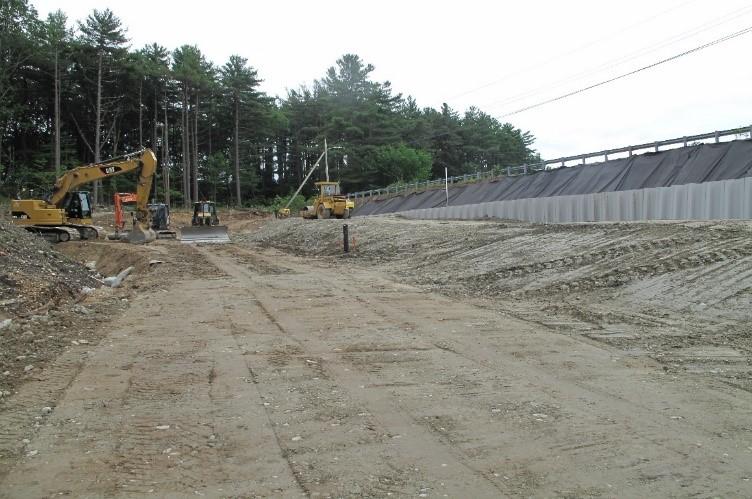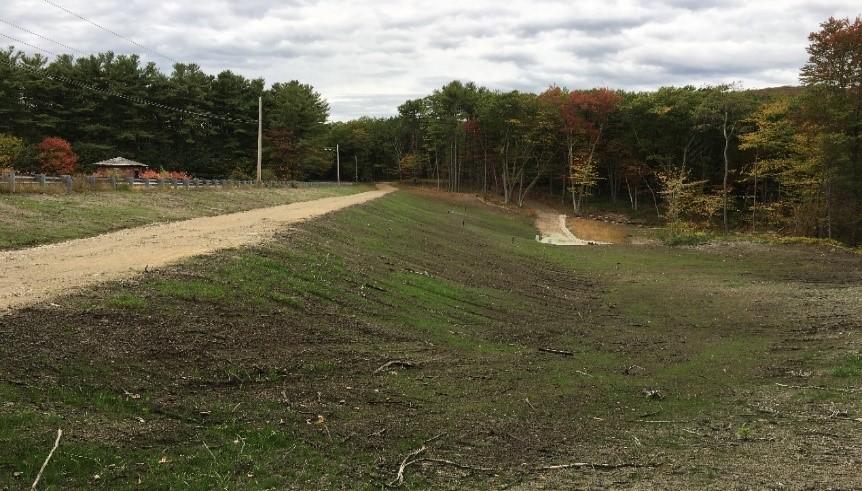Morse Reservoir
Back to ProjectProject Description
CEI worked with the City of Leominster to prepare design documents and obtain permits for improvements to the Morse Reservoir Dam, located on a public water supply reservoir. Morse Reservoir Dam is an approximately 25-foot high, 575-foot long earthen embankment dam constructed circa 1900. Its upstream slope is protected with riprap and vegetation. Its downstream slope is vegetated and is steeply sloping at about 1.5 to 2.0 horizontal to 1.0 vertical. Elm Street, a paved local roadway, traverses the top of the dam.
The spillway consists of a 15-foot wide by 4.5-foot high stone masonry lined channel, with Elm Street passing above the spillway on a concrete bridge. The stone masonry lined spillway channel ends in a natural earthen channel about 240 feet downstream of the dam. There is one low-level outlet at the dam consisting of a 14-inch diameter cast iron pipe located at a stone masonry headwall at the downstream toe of the dam. The outlet is controlled by a gate valve in a brick gatehouse intake structure located upstream of the dam accessed via a concrete walkway from Elm Street. The Morse Reservoir Dam is classified by DCR as an intermediate size, Significant Hazard dam in Fair Condition.
Dam investigations have determined the following major deficiencies:
- Significant seepage in three locations at the downstream toe of the dam, resulting in a combined loss of 45-50 gallons per minute, causing the reservoir to drop as much as 10 to 15 feet during low-flow summer conditions;
- Seepage through and above the stone masonry low-level outlet headwall at the toe of the dam;
- Small sloughs throughout the downstream slope near seepage area at right side of dam;
- Downstream slope is very steep at 1.5 to 2.0 horizontal to 1.0 vertical, with potentially inadequate factors of safety against failure of the downstream slope;
- Spillway stone masonry training walls have locally missing mortar and stones; and
- Low-level outlet valve is leaking with inadequate backup mechanics in place in the event of a failure.
The designed improvements address the dam deficiencies and include:
- Installation of a seepage cut off system of fiber resin sheet piling and injection grouting that extends from the top of the dam down to hard glacial till to prevent seepage through the dam;
- Regrading and filling along the downstream slope to change from a 1.5 horizontal to 1.0 vertical to a 3.0 horizontal to 1.0 vertical to provide the required factor of safety for dam stability;
- Clear vegetation from the spillway and modify to meet design storm and freeboard requirements;
- Repair, replace or retrofit the low-level outlet valve at the gate house;
- Extension of the low-level outlet piping and addressing leakage around the pipe; and
- Address climate change and the associated increases in large-scale storm event impacts.
Innovative design included fiber resin sheeting as a groundwater cut off wall in place of steel sheeting which saved over $500,000.
CEI used geophysical testing methods to determine high seepage flow areas and approximate quantities.




